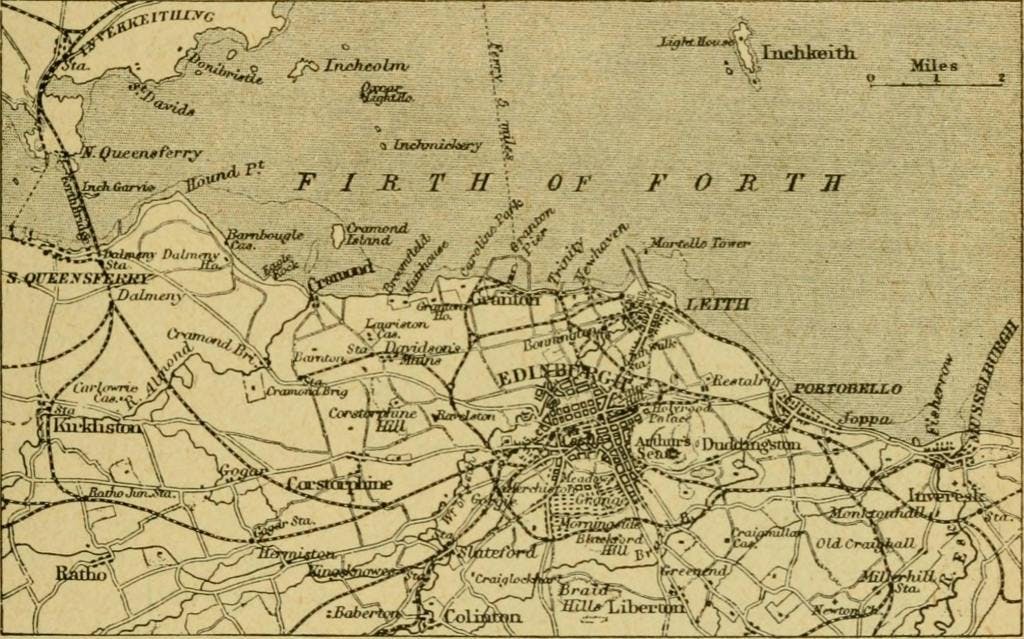Total flexibility, no commitment
A world of unique, crafted gins
Easy, free and reliable delivery

Edinburgh’s Spirited History
The distiller of our February Gin of the Month, Edinburgh Gin, draws on a long history of spirits and distilling in the city , much of which traditionally centred around the port of Leith – the location of their new distillery which is due to open later this year.
GIN TRADING
From the late 13th century until 1707 when it was overtaken by Glasgow, Leith was not only Edinburgh’s port – as the gateway to Scotland, it was also the nation’s busiest port.
In the 16th, 17th and even 18th centuries The Netherlands was Scotland’s most important trading partner.The Port of Leith sent out exports of wool, salmon, coal and other products. In return, a huge range of luxury goods were imported, such as spices brought in by the Dutch East India Company, tea and coffee, tobacco, brandy – and gin’s precursor, genever.
Large amounts of Dutch genever continued to be imported into Britain throughout the 18th and early 19th centuries with official figures for 1782 showing a figure of 2.5 million gallons. Unofficially the figure would have been much bigger as vast quantities were smuggled.
Indeed, Newhaven, next to Leith was a well-known centre for smuggling, with fishing boats making the short journey across the North Sea and landing items such as brandy and genever to avoid the taxes payable.
SPIRIT OF EDINBURGH
Leith also developed its own thriving homegrown spirits industry. By 1777 there were eight licensed distilleries in the City of Edinburgh and it is believed there were in the region of 400 unregistered stills.
As gin became fashionable in the 18th and 19th centuries Edinburgh distillers, like their London counterparts, had the sugar, spices and grain they needed to produce the spirit close to hand. And so they began to make what was originally a direct copy of Dutch genever to cater for the newfound thirst for gin.
Many of Edinburgh’s distilleries were also exporting grain spirit via Leith to London gin distillers. The Haigs and Steins, who dominated the legal distilling industry in Scotland, first dabbled in the gin trade in 1777, exporting 2000 gallons of grain spirit to London. By 1782 this had risen to 184,000 gallons.
In 1823, new legislation transformed Scottish distilling by halving duties and permitting volume production of a better quality of spirit. Licensed production of malt and grain spirit increased greatly and much of this soon found its way south of the border for rectification into gin – despite screams of protest from English distillers who considered the tax regime unfair.
GINNOVATION
In the 1820s a price war began between the gin and whisky producers, and the whisky producers were forced to lower their prices, even selling below cost price. Successful lobbying on the part of English distillers saw an increase in taxes on Scottish spirit. Scottish distillers, demonstrating the spirit for innovation that Edinburgh espouses today, reacted by coming up with a new way of distilling.
In 1826 Robert Stein invented a method of continuous distillation, which meant that spirit could be produced much faster and in much greater quantities than in pot stills, which had to be cleaned and re-charged between batches.
An Irish Excise man turned distiller, Aeneas Coffey who patented a twin-column version of Stein’s still in 1830, perfected Stein’s invention. Not only was the Coffey still more efficient, it could also use a variety of cheap grains rather than malted barley. Vast quantities of comparatively inexpensive neutral grain spirit could now be produced.
Initially much of it was exported to England for redistillation into gin. Much of this spirit, which left Scotland via Leith, directly influenced the development of gin itself as it allowed London distillers to move away from the heavy, sweet style of gin known as Old Tom and make a new type of sugar free, more aromatic gin known as London Dry.
END OF AN ERA
After 1870, supplies of French brandy dried up due to a plague of phylloxera insects which destroyed vineyards across Europe. In response, English distillers upped their gin output, while Scottish distillers increased their whisky production. In 1883, though there were still six gin distilleries at work in Leith.
Throughout the 20th century Leith increasingly became a centre for whisky, playing host to many major companies, before the advent of huge global drinks companies saw much of this activity moved elsewhere.
When Edinburgh’s last gin distillery, Melrose Drover, closed its doors in Edinburgh in 1974, it looked as though the city’s relationship with the spirits trade, and particularly gin, might be over for good. But now a whole new generation of gin distillers is making its home in the city, with Edinburgh Gin leading the way and ensuring the legacy lives on.







